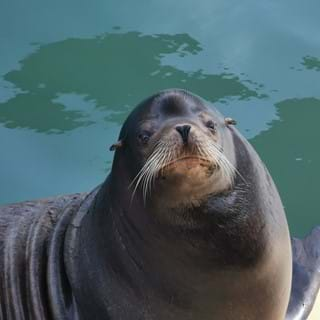Pinnipeds are carnivorous marine mammals that have both front and rear flippers. Both seals (phocids) and sea lions (otariids)are pinnipeds as well as walruses (odobenids).
Many years ago (approximately one million) pinnipeds were classed as land mammals. However, as they spent most of their time in the water they adapted to be marine mammals. Today, pinnipeds spend most of their time in the sea but do come onto land to shed, reproduce and escape from predators in the water such as sharks and orcas (killer whales).
There are a few anatomical differences between seals and sea lions, one of them being their ears. Phocids may be referred to as ‘true seals’ or ‘earless seals’. True seals do have ear holes but these can often not be seen unless close up, sea lions and fur seals on the other hand have small external ear flaps.
Another difference is that true seals have much smaller front flippers than sea lions. When on land, seals tend to move around using their bellies whereas sea lions can walk around on their larger front flippers and can rotate their rear flippers under the body to assist with movement.
|
Sea lions
Kingdom: Animalia
Phylum: Chordata
Class: Mammalia
Order: Carnivora
Suborder: Caniformia
Family: Otariidae
|
|
|
True seals
Kingdom: Animalia
Phylum: Chordata
Class: Mammalia
Order: Carnivora
Suborder: Caniformia
Family: Phocidae
|
|
Another difference between the two which is nothing to do with their physical appearance is the amount of noise they make. Sea lions and fur seals tend to be extremely noisy, this is because they tend to communicate via barking and bellowing in large groups when on the land. However, seals tend to communicate in slightly quieter ways and spend much more time in the water than sea lions.

